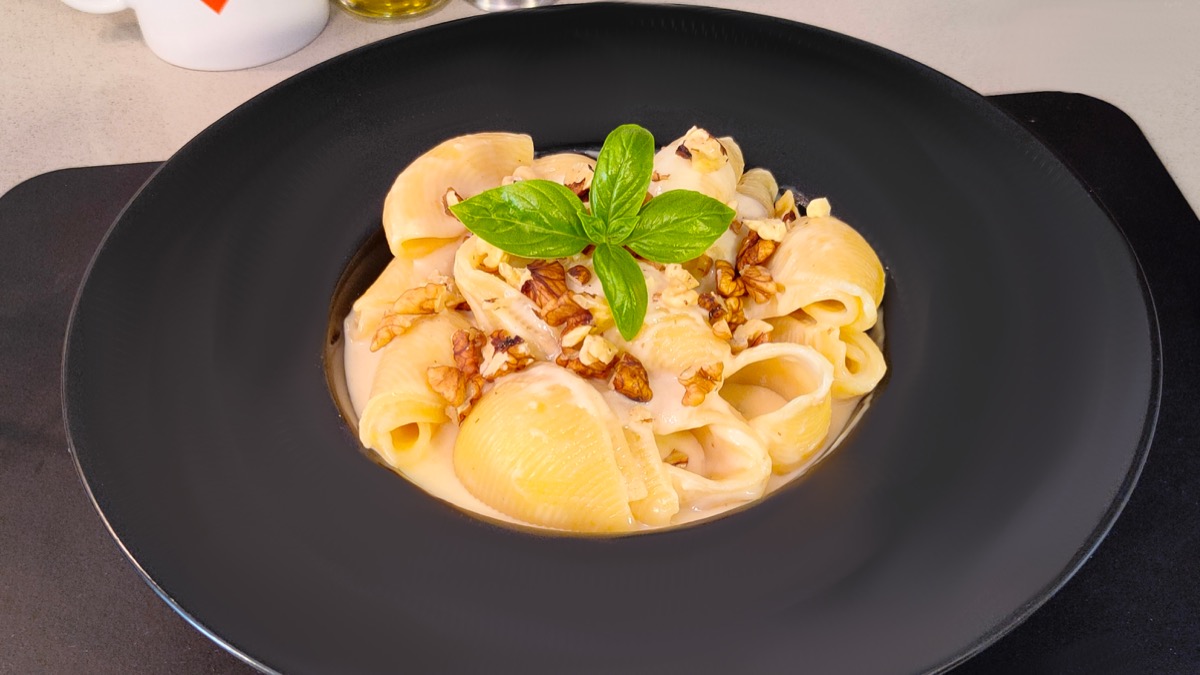Four cheese pasta

Presentation
If you're looking for a first course that's a true embrace of flavors, this recipe is for you. Today I'll guide you through my four-cheese and walnut pasta, a great Italian classic reinvented with a special twist. I'll show you how to create a velvety and enveloping sauce that can transform any dinner into a gourmet experience. Get ready to enjoy a creamy, rich, and irresistible dish, perfect for any occasion!
Ingredients:
- 200g of short pasta
- 80g of taleggio
- 80g of gorgonzola
- 150g of cream
- 20g of partigiano
- 20g of pecorino romano
- 1 bay leaf
- nutmeg to taste
- salt to taste
- walnuts to taste
Preparation:

Pour the cream into a pan and add a bay leaf; turn the heat 2 medium-low and add the Taleggio and Gorgonzola. Melt the cheeses, stirring constantly with a spatula to prevent sticking. Meanwhile, begin cooking the pasta in a pot of boiling salted water. Once the cheese fondue is smooth 3 add the nutmeg and continue stirring.

4 Finally, add the grated Parmesan and Pecorino cheeses and continue stirring to melt them evenly. When the pasta is 80% cooked, drain it and 5 it into the pan with the fondue. 6 Stir well, cooking the pasta until fully cooked while simultaneously reducing the fondue slightly until it reaches a creamy consistency. Serve the pasta, sprinkling the roughly chopped walnuts over the pasta. Serve hot.
Advise
- Bain-marie : If you don't want to worry about constantly stirring your cheese fondue, melt it in a bain-marie and you can forget about it.
- Cheeses : You can use any cheese you like, as long as it isn't stringy.
- Endless variations : this recipe is the classic one, but you can vary the proportions of garlic and chili pepper according to your taste or perhaps add an ingredient that enriches the dish like Parmesan cheese.
- Stir : Stir the pasta occasionally as it boils in the water to prevent it from sticking to the bottom of the pan and breaking.
Author:




